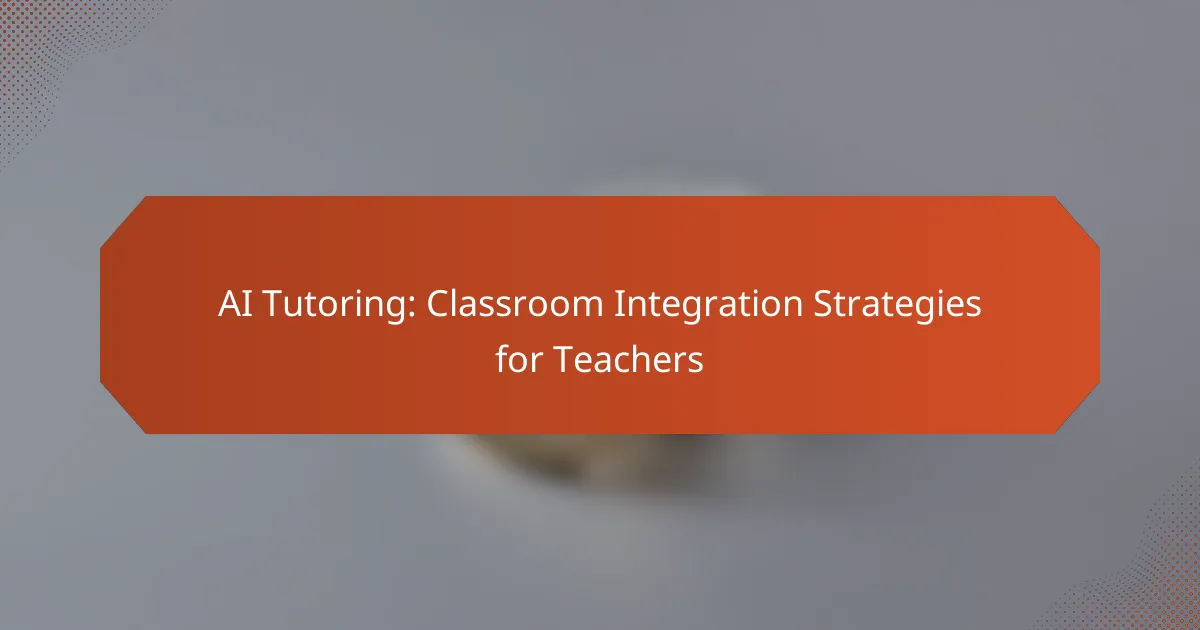AI tutoring offers innovative solutions for enhancing classroom learning by delivering personalized support and immediate feedback tailored to individual student needs. By integrating these tools into lesson plans, teachers can create engaging and adaptive learning environments that align with curriculum goals, ultimately improving educational outcomes for all students.
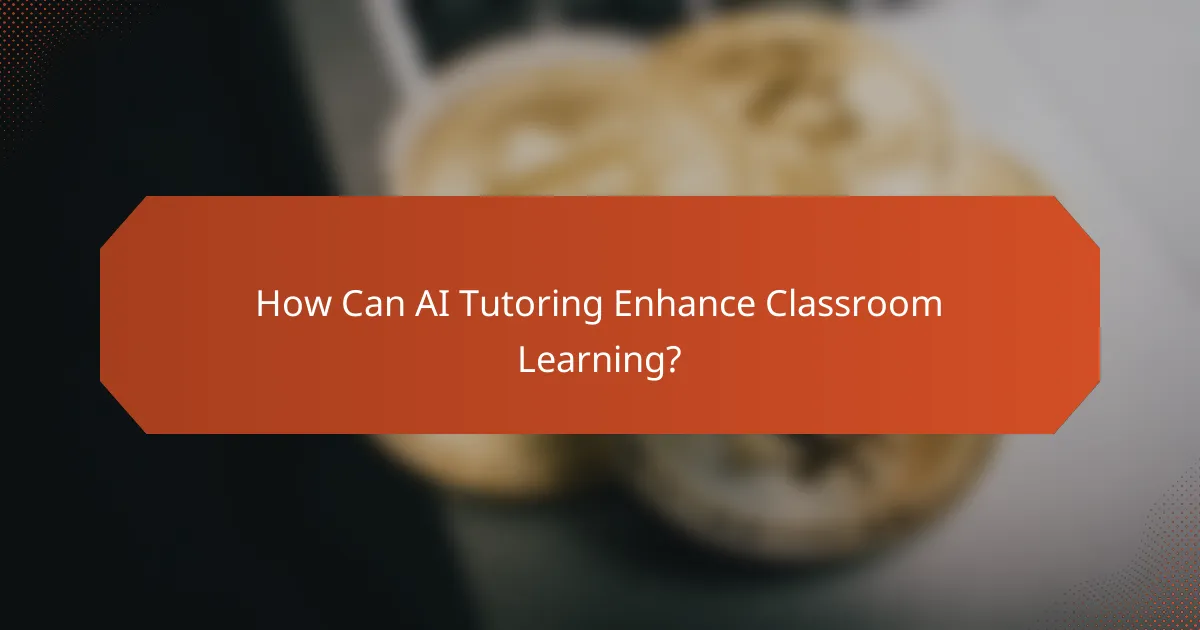
How Can AI Tutoring Enhance Classroom Learning?
AI tutoring can significantly enhance classroom learning by providing personalized support, immediate feedback, and scalable resources for teachers. These tools help address individual student needs, streamline assessment processes, and improve overall educational outcomes.
Personalized learning experiences
AI tutoring systems adapt to each student’s learning style and pace, offering customized lessons and resources. For instance, if a student struggles with math concepts, the AI can provide additional exercises tailored to their specific weaknesses, ensuring they grasp the material before moving on.
Teachers can leverage AI to identify patterns in student performance, allowing them to adjust their teaching strategies accordingly. This targeted approach helps maximize student engagement and retention of information.
Real-time feedback for students
AI tutoring provides instant feedback on assignments and quizzes, enabling students to understand their mistakes immediately. This timely response helps reinforce learning and encourages students to take ownership of their progress.
For example, when a student answers a question incorrectly, the AI can offer hints or explanations, guiding them toward the correct answer. This immediate interaction fosters a more dynamic learning environment compared to traditional methods.
Scalable support for teachers
AI tutoring tools can assist teachers by automating routine tasks such as grading and tracking student progress. This allows educators to focus more on instruction and less on administrative duties, ultimately enhancing the learning experience.
Additionally, AI can provide insights into class performance trends, helping teachers identify areas where students may need extra support. By utilizing these resources, teachers can better allocate their time and efforts to meet the diverse needs of their classrooms.
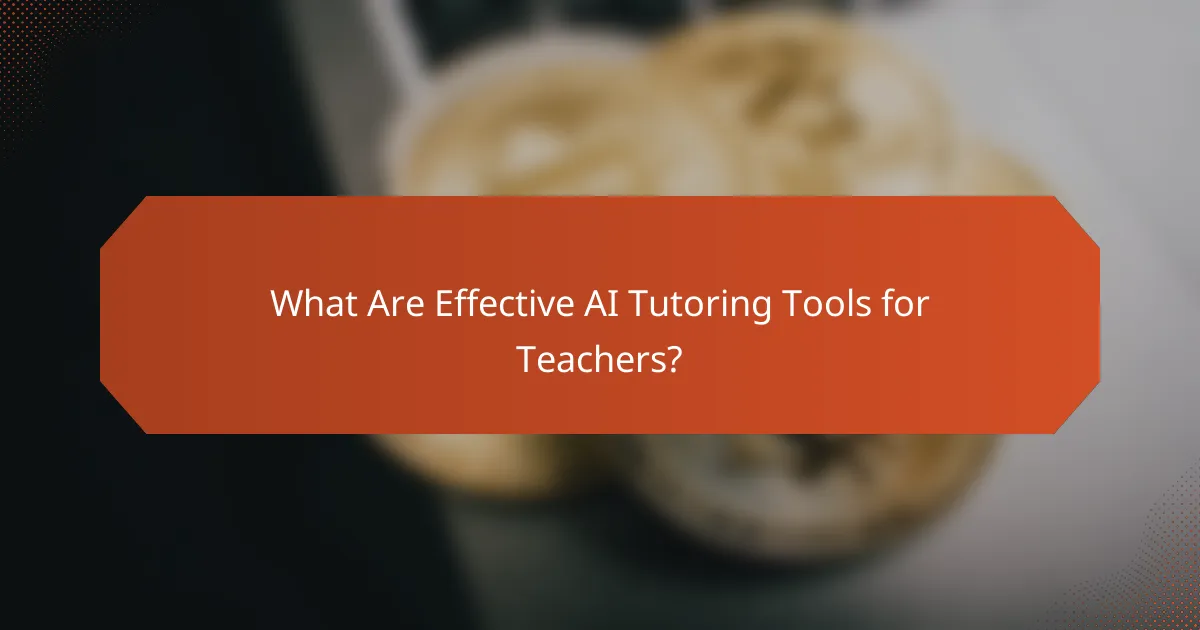
What Are Effective AI Tutoring Tools for Teachers?
Effective AI tutoring tools for teachers enhance personalized learning experiences, streamline administrative tasks, and provide real-time feedback. These tools can adapt to individual student needs, helping educators to better support diverse learning styles.
Google Classroom AI features
Google Classroom integrates AI features that assist teachers in managing assignments and providing personalized feedback. These tools can automatically grade quizzes and suggest resources tailored to student performance, saving educators valuable time.
To effectively use Google Classroom’s AI capabilities, teachers should familiarize themselves with its analytics dashboard. This feature allows educators to track student progress and identify areas needing improvement, enabling targeted interventions.
Khan Academy’s AI tutoring
Khan Academy employs AI-driven tutoring to offer personalized learning paths for students. The platform assesses student performance and adapts content accordingly, ensuring that learners engage with material suited to their current understanding.
Teachers can leverage Khan Academy by assigning specific modules based on class performance data. Regularly reviewing student progress through the platform helps educators adjust their teaching strategies and provide additional support where necessary.
IBM Watson Education
IBM Watson Education utilizes AI to enhance the learning experience by providing insights into student behavior and learning patterns. This tool can analyze data to recommend resources and strategies tailored to individual student needs.
Educators should consider integrating IBM Watson into their curriculum planning. By using its analytics, teachers can identify trends and adapt their instructional methods to better meet the needs of their students, ultimately improving educational outcomes.

How to Integrate AI Tutoring into Lesson Plans?
Integrating AI tutoring into lesson plans involves strategically incorporating technology to enhance student learning and engagement. This can be achieved through aligning AI tools with curriculum goals, creating blended learning environments, and utilizing AI for assessment purposes.
Aligning AI tools with curriculum goals
To effectively align AI tools with curriculum goals, start by identifying the specific learning objectives for your class. Choose AI platforms that offer resources and activities tailored to these objectives, ensuring they complement your existing lesson plans.
Consider tools that provide personalized learning experiences, allowing students to progress at their own pace. For example, platforms that adapt to individual learning styles can significantly enhance understanding and retention of material.
Creating blended learning environments
Blended learning environments combine traditional teaching methods with online resources, including AI tutoring. This approach allows for flexibility in how students engage with content, fostering a more personalized learning experience.
In practice, you might assign AI-driven homework that reinforces classroom lessons or use in-class time for discussions and hands-on activities. This balance can help maintain student motivation and improve learning outcomes.
Utilizing AI for assessment
AI can streamline the assessment process by providing instant feedback and analytics on student performance. Implement tools that automatically grade quizzes and assignments, allowing you to focus on providing personalized support where needed.
Additionally, consider using AI to analyze trends in student data, helping you identify areas where students struggle. This insight can guide your instructional strategies and help tailor interventions to improve overall class performance.
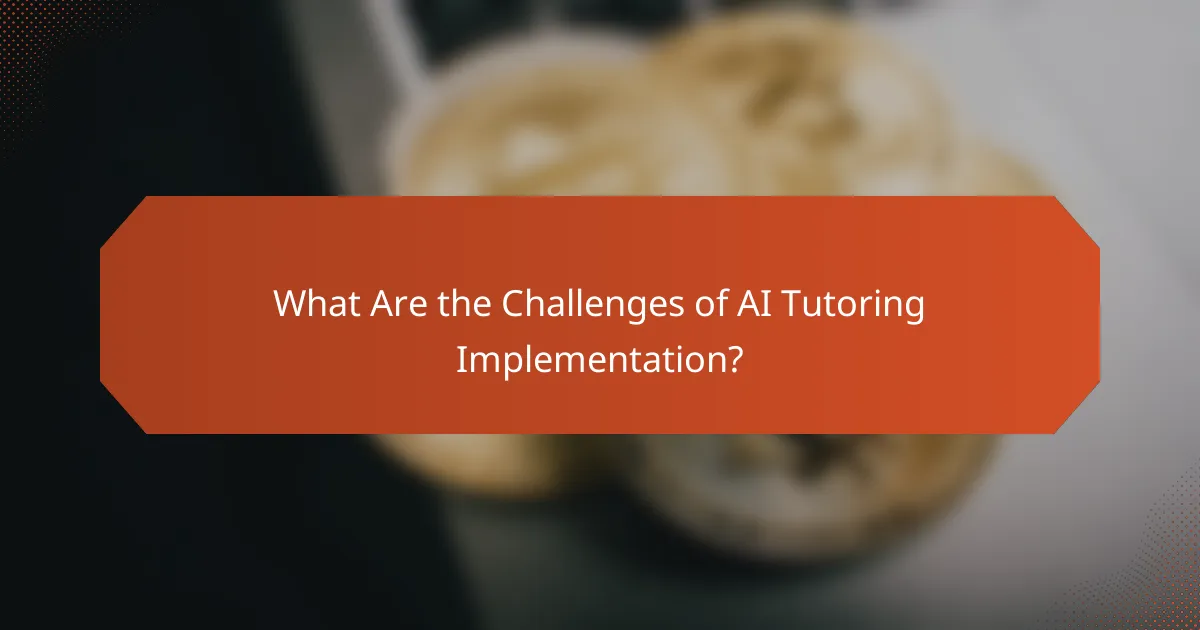
What Are the Challenges of AI Tutoring Implementation?
Implementing AI tutoring in classrooms presents several challenges, including the need for teacher training, data privacy issues, and the cost of AI tools. Addressing these obstacles is crucial for successful integration into educational environments.
Teacher training requirements
Effective use of AI tutoring tools requires teachers to be adequately trained. This training should cover not only how to operate the technology but also how to integrate it into existing curricula. Teachers may need workshops or ongoing professional development to feel confident in utilizing these tools.
Consider creating a structured training program that includes hands-on practice with AI tools, peer collaboration, and feedback sessions. This approach can help educators become proficient and comfortable in using AI to enhance student learning.
Data privacy concerns
Data privacy is a significant concern when implementing AI tutoring systems, as these tools often collect sensitive student information. Schools must ensure compliance with regulations such as FERPA in the U.S. or GDPR in Europe, which govern the handling of personal data.
To mitigate risks, schools should conduct thorough assessments of AI tools, focusing on their data protection measures. Establishing clear policies on data usage and obtaining informed consent from parents can also help safeguard student privacy.
Cost of AI tools
The cost of AI tutoring tools can vary widely, impacting their accessibility for schools. Prices may range from low-cost software subscriptions to high-end systems requiring significant investment. Budget constraints often limit the options available to educators.
When considering AI tools, schools should evaluate the potential return on investment. Comparing features, scalability, and support options can help identify the most cost-effective solutions. Additionally, exploring grants or partnerships with tech companies may provide financial assistance for implementation.
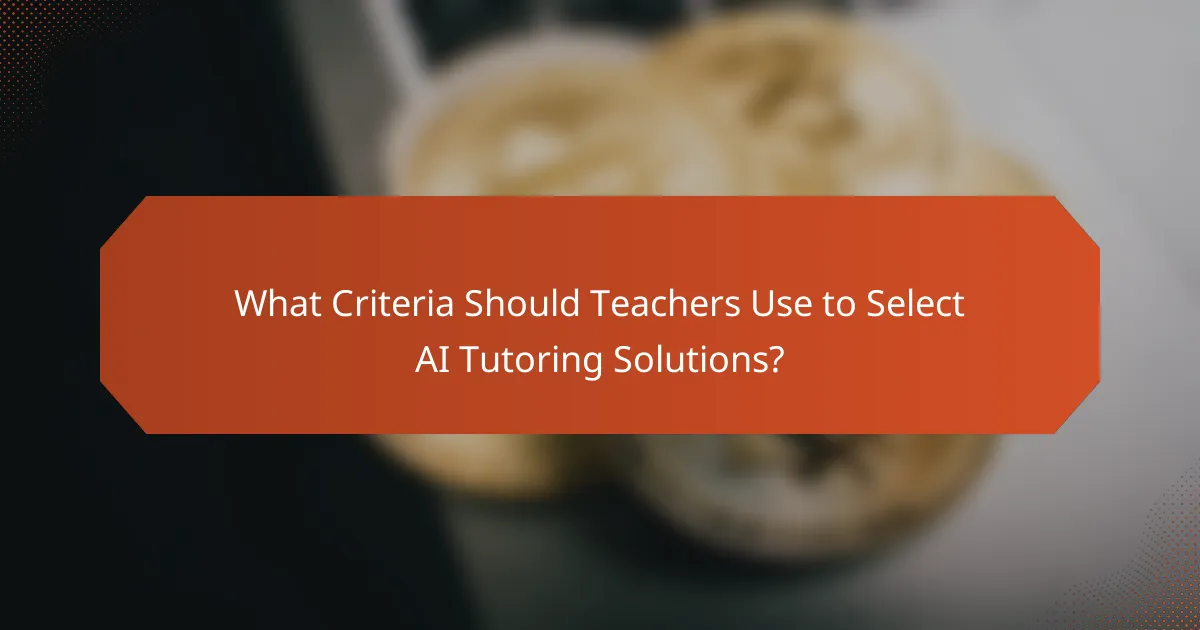
What Criteria Should Teachers Use to Select AI Tutoring Solutions?
Teachers should consider user-friendliness, integration capabilities, and support resources when selecting AI tutoring solutions. These criteria ensure that the chosen tools enhance learning without creating additional barriers for students and educators.
User-friendliness for students
User-friendliness is crucial for ensuring that students can easily navigate AI tutoring solutions. A platform should have an intuitive interface that minimizes the learning curve, allowing students to focus on their studies rather than struggling with technology.
Look for features like clear instructions, engaging visuals, and responsive design that works well on various devices. Tools that offer personalized learning paths can also enhance user experience by catering to individual student needs.
Integration capabilities with existing systems
Integration capabilities determine how well an AI tutoring solution fits within a school’s current technological ecosystem. Solutions that seamlessly connect with learning management systems (LMS) and other educational tools can streamline workflows and reduce administrative burdens.
Consider platforms that support common standards like LTI (Learning Tools Interoperability) or have APIs for easy integration. This ensures that data flows smoothly between systems, allowing for better tracking of student progress and performance.
Support and resources from providers
Robust support and resources from AI tutoring providers are essential for successful implementation. Look for vendors that offer comprehensive training, ongoing technical support, and a wealth of instructional materials to help teachers and students maximize the tool’s potential.
Evaluate the availability of resources such as user guides, video tutorials, and community forums. A strong support network can significantly enhance the effectiveness of AI tutoring solutions and foster a positive learning environment.
